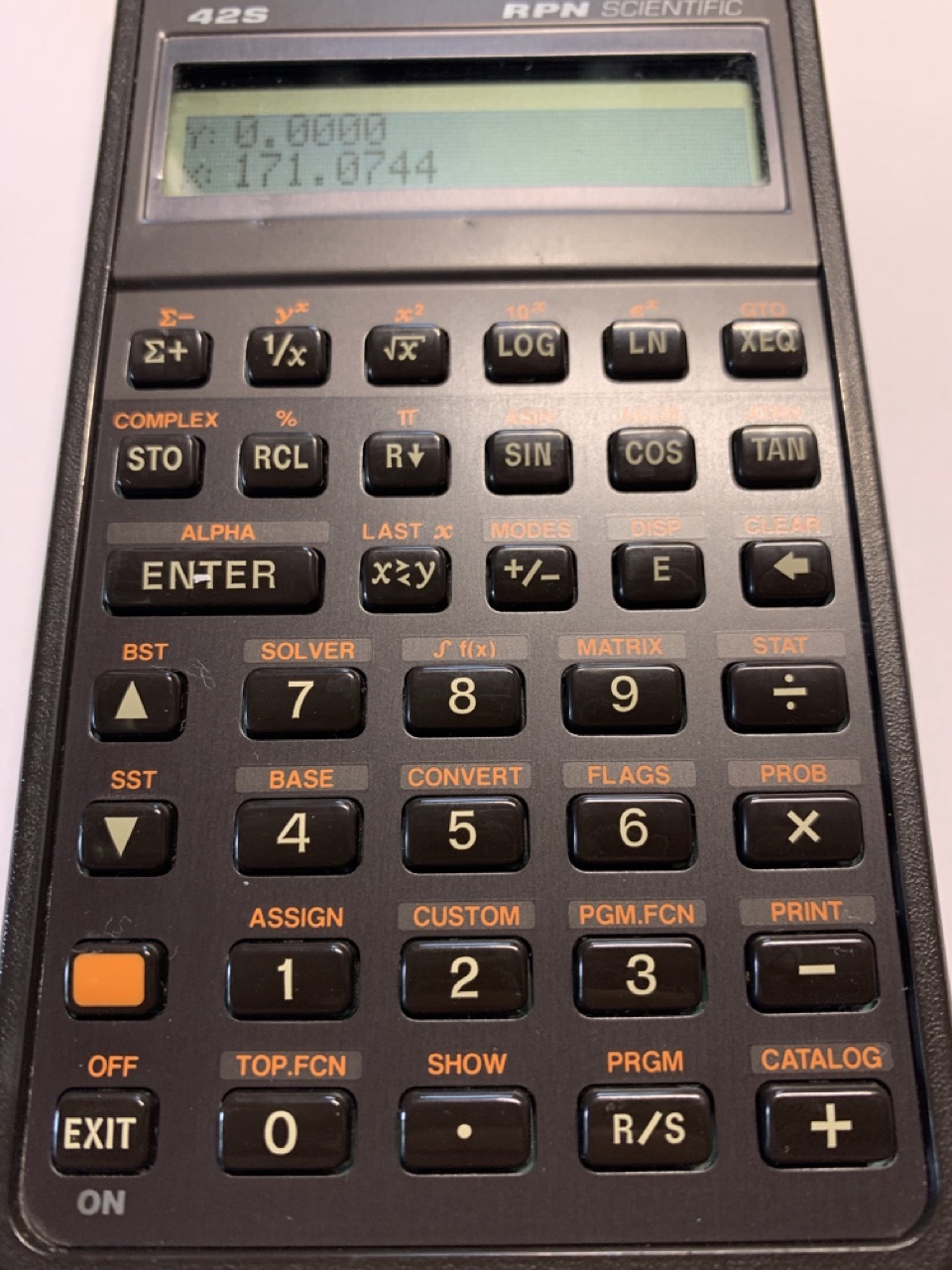Calculator Types Calculator blog
Calculator blog
Musings and comments about our common interest
More news on HP Calculators
After several years of no other new products than developments of the HP Prime hardware, is good to know that there is a new HP scientific calculator coming - in fact, a couple of them. Although being linked by a NDA, I think it is safe to say that 1st, you all are going to like it, and 2nd, it will come with some nice surprises hidden in it ! Have seen the prototypes, I have to say I like them a lot!
Production will finish end of 1st quarter 2023 - but then there is boat shipping to Europe...take at least 2 month more.
There will be another scientific calculator, but far less exciting for us hardcore HPers.
Some news on HP calculators
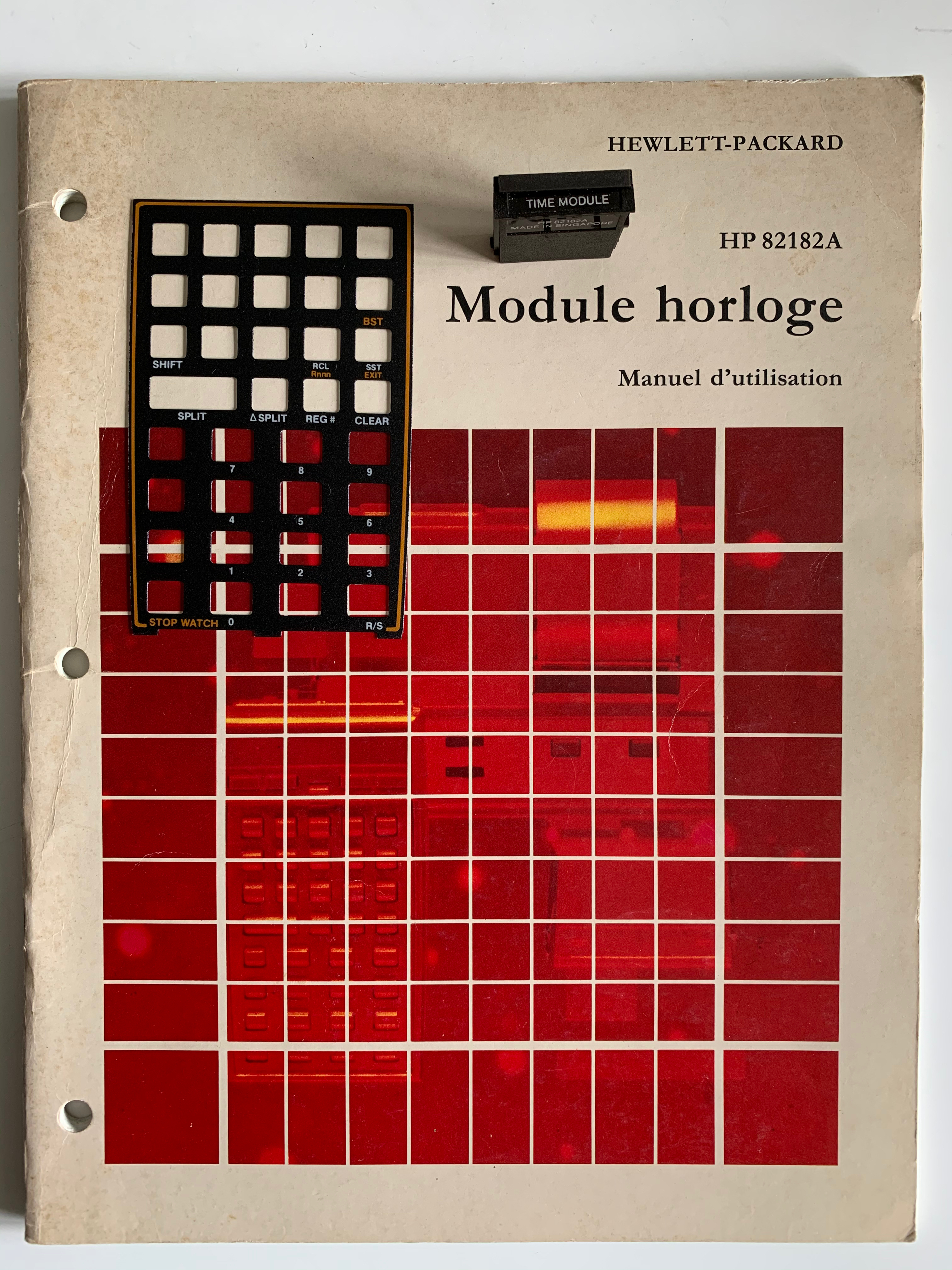 Under new management there are plans to introduce more new products under the brand. However, the lack of semiconductors has delayed both new and old products, so that, for example, the HP12c will only be available in March 2023 again.
Under new management there are plans to introduce more new products under the brand. However, the lack of semiconductors has delayed both new and old products, so that, for example, the HP12c will only be available in March 2023 again.
The machines I have seen are produced in the Philippines and are made of good quality - clearly better than the older two-batteries units that I have at home. Again, these are based on Atmel processors, but a different model than the previous one, with more memory.
Also the new owners of the brand have ownership of all printed material - they own the copyright! So it would be good to know which books you guys would be willing to buy if re-edited! In the current world of Amazon self-printing, it could be quite easy to be able to re-edit whichever manual we'd like.
So this is a question to you guys: which manual would you be willing to buy? In which language? (please remember that the copyright comprises all languages as well, and many were used by HP in its heyday)
The HP Prime
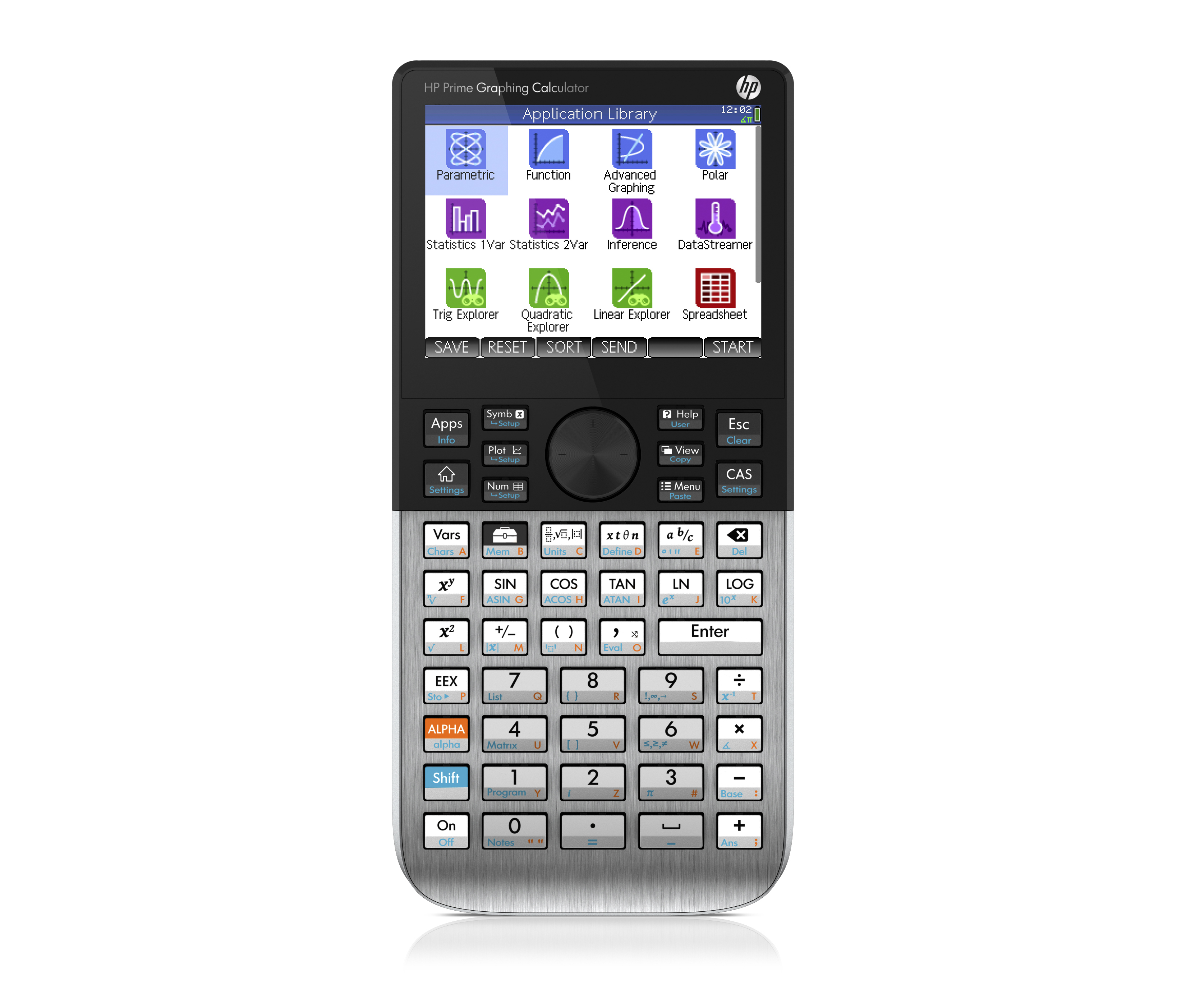 The HP Prime is still the most powerful calculator around. After 8 years from its inception, and after several improvements in its software and applications, it is still a fantastic student tool. (The fact is that professionals have different needs once in office - better served by a smaller calculator like a 17bII or a Voyager family calculator)
The HP Prime is still the most powerful calculator around. After 8 years from its inception, and after several improvements in its software and applications, it is still a fantastic student tool. (The fact is that professionals have different needs once in office - better served by a smaller calculator like a 17bII or a Voyager family calculator)
Have you ever tried to play one of the graphic games that can be downloaded off hpcalc.org? Written in easy HP Basic, a derivative of the simple Basic we all knew, is incredibly fast despite being an interpreted language. A programming challenge to children would be to create a short game in basic. The examples you can see in hpcalc are simple but exciting. I will look into other sites (notably in France there is a wealth of HP Prime amateurs)
The newer Prime versions (G2 and later) are still faster than the original, so these games need to be adapted to the superior speed of the calculator. (that would be an even simpler exercise: look at the game program and find the place or the variable you need to touch to change the timing of the game)
The HP10bII
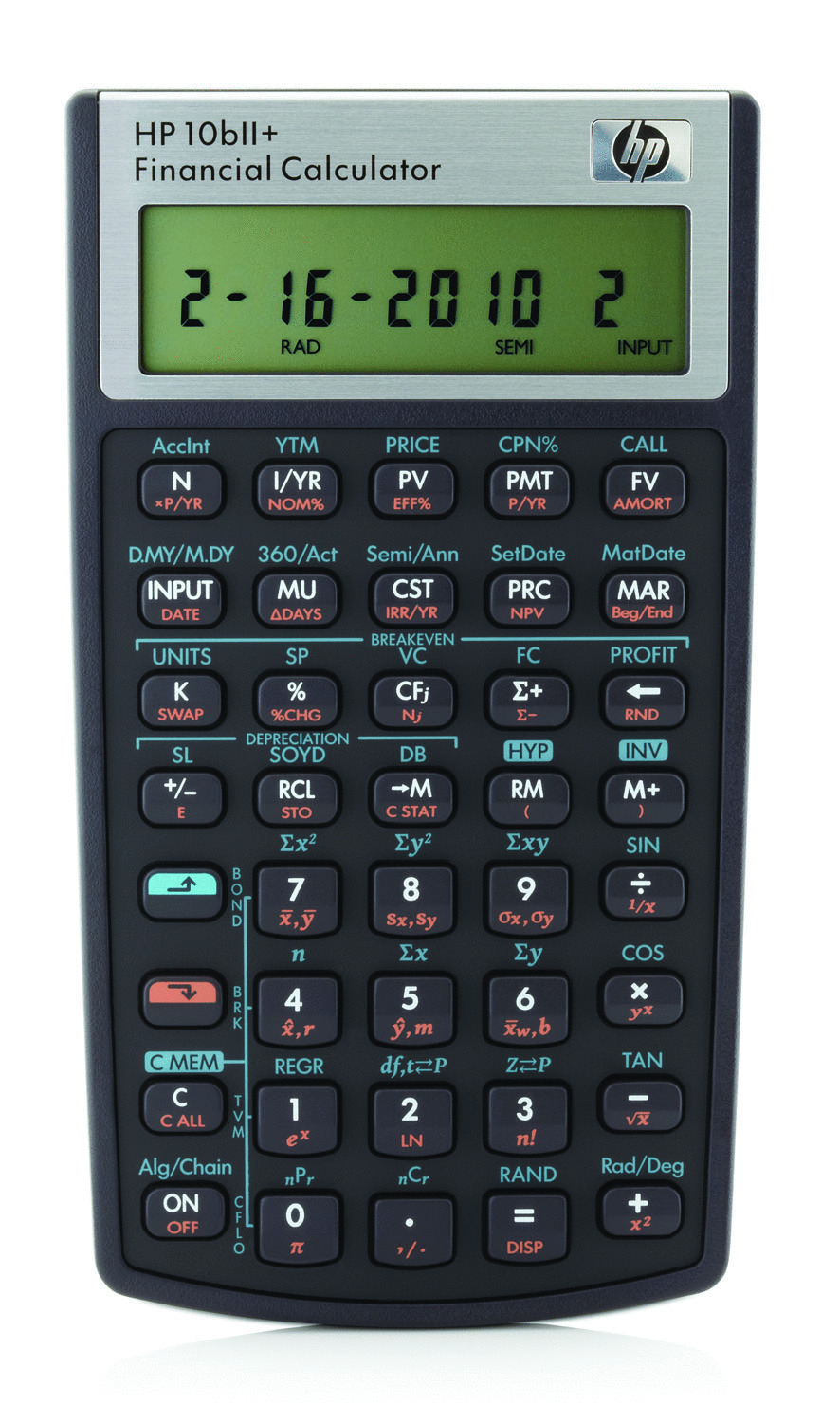 The HP10bII+ is a different animal from the different versions of HP10bII. It is a far more complete unit, having lots of scientific functions in addition to the whole HP10bII lot, and several additional financial functions too.
The HP10bII+ is a different animal from the different versions of HP10bII. It is a far more complete unit, having lots of scientific functions in addition to the whole HP10bII lot, and several additional financial functions too.
Among the scientific functions:
- Trigonometric: Sine, cosine and tangent and their inverses
- Hyperbolic functions and their inverses too!!
- Permutations and combinations
- 2-variable statistics and linear regression
- Factorial
- Random number
- PI
- Normal and Student's T distributions and their inverses
And then you have the full list of financial functions: cashflow, IRR, NPV, depreciations, bonds, Time Value of Money, and breakeven calculations (this is also a first for this function). All in all, a very complete calculator. Let's not compare it for a moment with the original HP10bII - which was a quite simple calculator in comparison with this one.
HP42s
While the unit that I use every day is the HP15c (more now with more programs due to the extended memory we discussed in the previous blog), I realize that the best HP non-graphical calculator is the HP42s. (other competitors are the HP67 and the HP41c calculators). I have my own that I wll not part from. It joins the HP42 compatibility with much more memory, better speed and a very good extended set of functions covering matrix, complex and others. It only lacks the expandability of the HP41 - the rest is better in my opinion - even the keyboard feel is a the same level.
We have now one for sale, at 325€. It has very minor dents in the screen bezel, but it looks wonderful and it has excellent screen. Grab it while it lasts!!
Even more memory in a HP15c LE?
For those of you that have a HP15c LE, and remembering the previous post about cabling to repurpose a 12c to a 15c - now there is something that can be interesting to you!
The forum thread is here:
https://www.hpmuseum.org/forum/thread-18491-page-3.html
At the beginning of the post (already cited in the previous blog installment), they discuss the different HP15c firmware available, and they post three of them.
But later in the thread, there is a discussion on how to increase calculator memory in firmware, by patching the original ROM that is in every HP15c. The ROM adressed the available memory of the original calculator, but in the emulated system there is more memory! So there have been several attempts at increasing the memory by patching the original ROM in selected places.Someone has reached 128 registers (the original machine has 64), and there is an in-depth discussion on how to reach 192 registers. J-F Garnier even posts the ROM positions that need to be patched.
With that information, we have been able to create a patched ROM that allows for 192 registers. The firmware by default offers 94 registers and 99 non-allocated registers for programs and matrices. With this split, you could use 693 program steps. This is a screenshot of the MEM command, showing the above memory scheme. However, other splits are possible.

Reprogramming a HP12c into an HP15c
There is still a lot of demand worldwide for the HP15c calculator. While the HP42 was arguably a better calculator, the sheer elegance of the HP15c beats it every time. All keys had three functions - at least, since some key labels could be understood differently if you were working with numbers or matrices (yCx and yPx), or as matrices or program labels (A to E keys).
Si ti is no surprise that people want to get hold of an HP15c "on the cheap". the easiest way is to reprogram a current ARM-based HP12c. There was a recent discussion in hpmuseum.org on hp15c firmware for the old Hp15c LE edition issued in 2011 - and it was posted there ( I will not do it here due to copyright issues - at the end this is a business and it is better to stay safe)
To do it you need a cable to connect your computer with a JTAG connector like the one in the back of the calculator. these connectors are made of POGO pins, and are increasinglt rare:
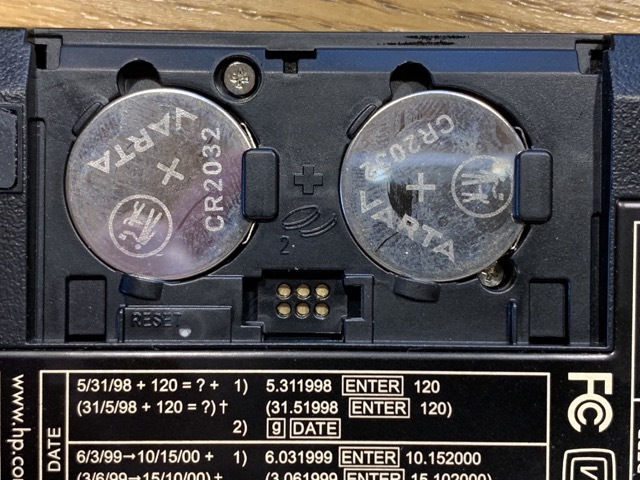
It is the 6-pin connector in the middle. This is a recent HP12c calculator. Beware with the cable: there are two types of HP12c ARM-based. The ones prior to 2015 were based on an Atmel AT91SAM7L128 and the communication protocol is serial RS232; while after that there was a new model based on another chipset, the Atmel AT91SAM4LC2CA, and here the connection is USB !! (with the same outward connection)
I enclose here a screenshot of hpmuseum.org discussion about the pinout of the two calculators:
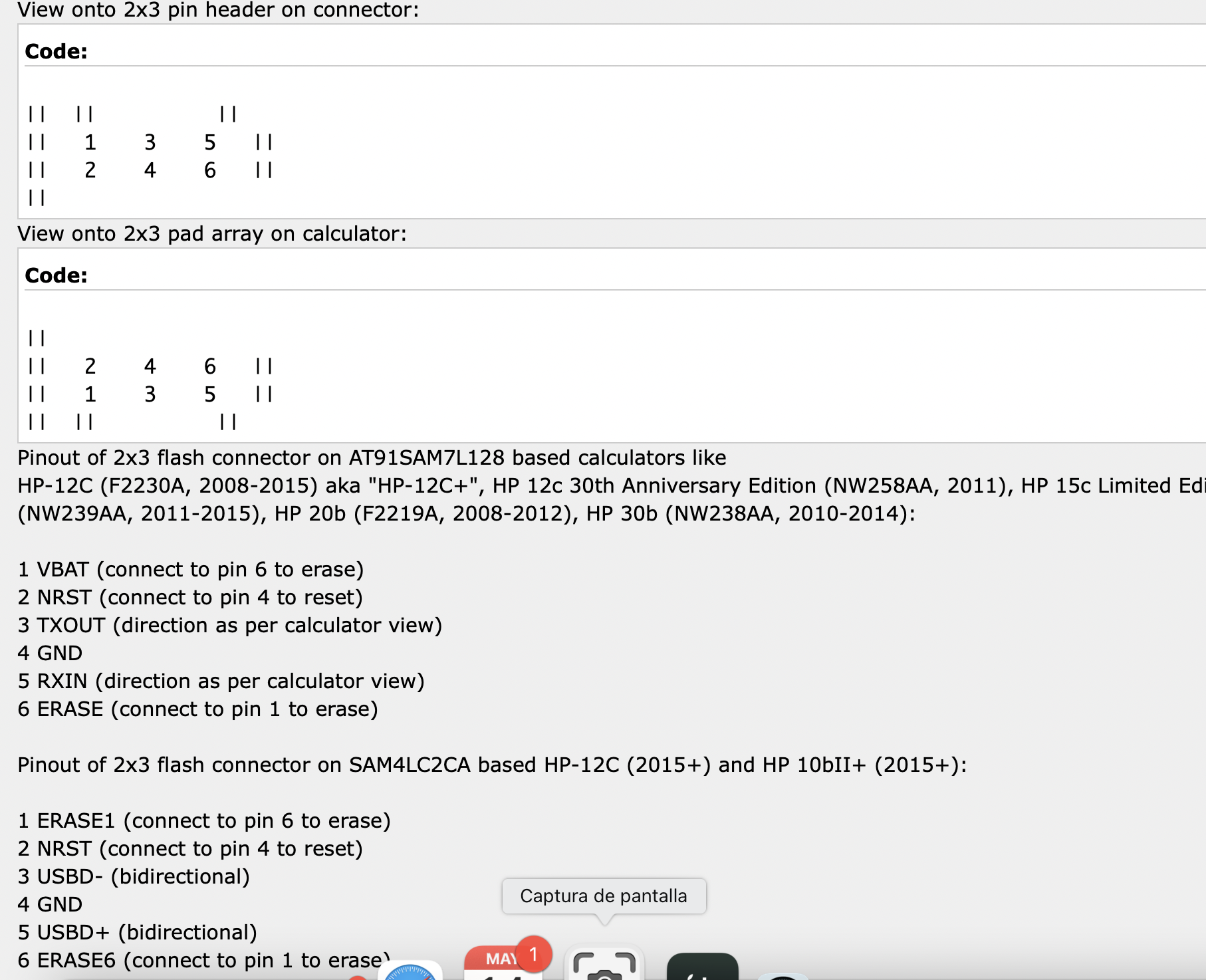
You can get there more information on how to get the cable. Good luck!
Register arithmetic on the HP15c
There had been register arithmetic features in other HP calculators before, but never with the depth and variety of the HP15c. We’ll see it in a moment.
What do we mean for register arithmetic? Let’s see how you would work with the contents of a register. Say that you want go get the contents of a register and add them to the X register. Without register arithmetic, you would need to call the contents of the register to X (RCL 5, for example), and then press “+” (by doing this, you would have raised the old X to Y, the old Y to Z, the old Z to T, and the old T would be lost – something to take care about when programming)
With register arithmetic, you would just do RCL + 5, and while the number of keys is the same, you don’t loss the T register!
I may agree that RCL + (or -, x or /) are interesting but nothing to write home about. However, you can do the same with STO: add the X contents to a register. This really saves strokes, and it is much more elegant: compare:
RCL 5
+
STO 5
with register arithmetic:
STO + 5
It also makes for shorter programs. Be careful with the division and subtraction operations: you need to remember that the second operand is always the one in the X register.
There are other interesting operations, involving the I register: you can operate with the contents of the I register, (STO + I), or with the contents of the register adressed by the content of I: STO + (I). These are very useful when programming – really clarifying the program flow
(Not related to register arithmetic, but worthy to discuss here too, is the exchange of X with the contents of a register: either a direct number (0 to 9, .0 to .9), the I register, or the register indicated by the contents of register (I): you use the key X »«)
HP15c book - II
Continuing with the book idea, I’d like to know what you guys are interested on, regarding our beloved HP15c. More technical details? More programming tips? A systematic listing of all published programs?
A possible avenue would be to port programs from the HP41c. Having access to all solution books, it should be quite easy to achieve a significant number of programs. We must dispense -in my opinion- with all the data entry part and assume that required data is either in the stack or in known registers. Also, we must discard those programs that make reference to extended memory, files, or peripherals, or those that are exceedingly long. Some of my more interesting HP41 programs were of this kind…
Also, I lack the knowledge in many areas about, not only what are the formulas you want to implement for a given problem, but what are the main problems in each discipline! Hence we will have to trust HP’s solution books. My expertise is limited to electrical engineering and finance – so these will probably be well covered.
There is also the fact that computing has progressed enormously since the HP15c was first released in 1982 (which reminds me that this year was its 40th anniversary). By that I mean that the HP41 was all computing many people could afford; and therefore there were programs for it that nowadays you would not dream of executing, waiting instead to sit in front of your excel spreadsheet to solve it. We’ll try to weed out these “non-practical” programs too from our book.
Constants storage is also not too practical when you have just 64 registers. The machine comes with e and pi only – and that should be enough. But in some cases it may make sense. I see this very close to cheating in class.
An interesting area for programs is the one related to education. Many graphical calculators are banned from exams, while the humble HP15c would not be banned, since the exam supervisor would not know how powerful it is. I refer in particular to its programmability and the matrix, solve and integrate features, not seen in most calculators of its size. We can think of program sets for geometry, matrix math, physics, chemistry, statistics and probability, etc. The way this is taught in most schools precludes using the calculator as sole solver of the problem – but it can be used to ensure that your answer is correct. In some cases like small equation systems, it could be used as is – but the bulk of the exam problems will require detailed step-by-step that the calculator cannot provide.
A couple of the initial chapters could be spent explaining the advanced features of the HP15c, and how to integrate them in your programs: matrix, solve, integrate and complex numbers. (in our financial programs, we use the Solve routine to calculate the IRR of an investment based on a short Net Present Value program).
An interesting way of doing it would be to create “program sets”: several programs installed at the same time, with a clever distribution of labels and programs for each application area. It is even conceivable to create overlays for such applications, knowing that it should only cover the letters A to E and the number keyboard (since there is where the program labels should go – the HP15c keyboard was never fully configurable. Only keys A to E under the user mode and numbers 0-9 and .0 to .9, preceded by GSB, could host program label calls.
Again, I am calling for your feedback about what you want to have in such book. You can contact me atjose@thecalculatorstore.com. I promise answering and a healthy discussion!
HP15c book
 As the HP41 repair book has already passed the 500 units sold mark, I have been challenged to write a book on the HP15c.
As the HP41 repair book has already passed the 500 units sold mark, I have been challenged to write a book on the HP15c.
Many years ago, there was a book called "An Easy Course in Programming the Hp-11C and Hp-15C (Easy Course Series)", by Ted Wadman and Chris Coffin, which I have not been able to get hold of. Then you have the fantastic user manual and also the Advanced functions manual - in itself a computer science crash course. Then there are many sites that have several programs, but nothing like a common respository with all known applications.
I am not the only one to love the HP15c. Its compact form factor, the ability to use it with both hands for a faster keying in, the complete and consistent fucntion set, the good memory sze for its time, made it a formidable calculator for the engineer and scientist calculation, when he was far from a computer. I still use it every day and the search statistrics of my site still show it as the most searched item - after all these years.
The manual will describe the machine, list its several versions, explain how its firmware can be upgraded, and will list many programs for all areas of scientific knowledge and for all educational levels. Most of the information is already available if you know how to search for it, but I have missed a place where you can read all of it with a consistent writing and enough explanations on what each program is doing.
You may say that it does not make sense to write a book about a discontinued calculator, but I know for a fact that there are many of them still in use around the world, with peaople searching for software and longing to read more about it.
Besides, I do not lose the hope of having it produced again...




